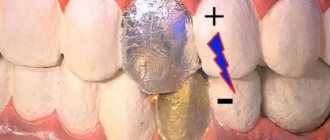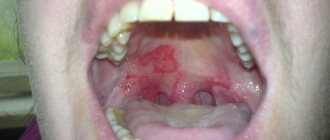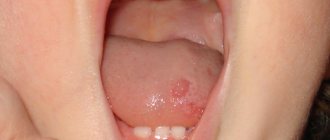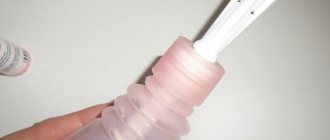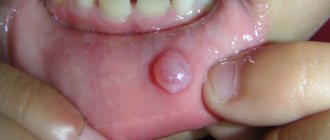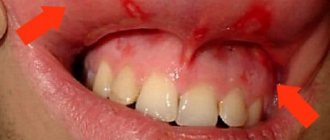Last updated November 17, 2020 at 05:47 pm
Reading time: 3 min
Leptothrix, in fact, is an infectious disease that is caused by bacteria that multiply in fresh waters; it is also possible for this microorganism to live even in swimming pools. The name leptothrix has the following interpretation: leptos means thin, and thrix means hair, based on this, you can guess that the pathogen looks like a long hair.
A similar disease is diagnosed mainly in women; men are extremely rarely infected, due to the fact that this virus mainly affects the oral cavity, but in women it can also enter the vagina; leptothrix in a smear indicates bacterial vaginitis.
In this case, men are not at risk of infection through sexual contact, since it is not transmitted through intimate intimacy. Leptothrix is often found in smears in pregnant women.
The reason for the appearance of such a virus is the appearance of a microbe in the human body when it is in a body of water or in a swimming pool. It is not transmitted sexually. Leptothrix bacteria has two varieties, one that develops in the oral cavity, and the second that affects the vagina.
Treatment for leptothrix is not always prescribed; sometimes the disease goes away on its own, without the help of any medications.
Symptoms and diagnosis of leptothrix
As such, there are no characteristic symptoms of this disease in the oral cavity. If the number of microorganisms begins to increase significantly in the mouth, then it is possible to feel that a foreign object has appeared in the pharynx.
But if it gets into the vagina, some deviations in the woman’s condition may appear. Strong discharge with a characteristic odor may appear. All other symptoms of such an infection can be determined by visiting a gynecologist.
When tested, leptothrix in a smear is usually found with other infectious diseases, this can be chlamydia, trichomoniasis, vaginosis and candidiasis.
In the presence of such a microorganism, a person’s condition does not change, so often the disease can be discovered by chance, that is, a doctor can see it when examining the pharynx. Also, purely by chance, a gynecologist may discover a disease in a woman who uses an IUD.
A good specialist can easily identify this microbe when examined under a microscope, since the type of such bacteria is different from the type of others, and it is not possible to confuse them. A gynecologist can also diagnose this disease when examining a patient.
What is leptothrix in a smear?
If during the examination you were found to have leptothrix in a smear, do not be alarmed.
This genus of microorganisms lives in freshwater bodies, so it is a mistake to think that infection occurred during sexual intercourse. Moreover, many doctors do not consider leptotrichia to be pathogenic microorganisms. In 90% of cases, these bacteria are found in women. In men, this phenomenon almost never occurs. At the same time, during sexual contact with a sick woman, a man will not get leptotrichosis (this is also the name of this disease).
These microorganisms can cause the following diseases:
- leptotrichosis of the oropharynx,
- vaginal leptotrichosis,
- bacteremia of newborns.
In a laboratory study of a smear on the flora, leptotrichia are very clearly visible under a microscope. By themselves they are not dangerous. However, if a woman has been diagnosed with leptorichia, she will probably be prescribed several additional examinations. After all, they are frequent “companions” of such unpleasant sexually transmitted diseases as trichomoniasis and chlamydia.
They are often present in the smear of women suffering from mixed infections such as candidiasis and bacterial vaginosis. In this case, bacteria are found in large quantities not only in the smear, but also in the urine.
Often such bacteria are present in the smear of women who, for one reason or another, have a weakened immune system, including as a result of HIV. These microorganisms can also be detected in the oral cavity. If you don't get rid of them, they can cause serious tooth decay.
Symptoms caused by leptotrichia are as follows:
- gray vaginal discharge,
- grayish spots on its walls (upon examination),
- gray plaque on the palate, tongue and tonsils.
By themselves, they are practically harmless, but they can serve as catalysts for various inflammatory processes in the body. If a woman is planning a pregnancy, then she should know that leptotrichia is the cause of miscarriages and inflammation of the membranes. The influence of leptotrichia on the development of various bacterial complications in the fetus has also been proven, which can lead to dire consequences. Therefore, after detecting these bacteria, the woman will need to undergo a course of treatment.
At the moment, there are no standard treatment regimens for this disease.
Treatment is carried out with tetracycline antibiotics, and it is recommended to undergo a flora sensitivity test in order to choose the right drug.
If a woman, in addition to leptothrix, has some other infections, then we are talking about broad-spectrum antibiotics that simultaneously treat several diseases.
And, of course, you should not try to cure this disease on your own using folk remedies. No amount of herbs or douching will help here. Only the use of antibacterial drugs will have an effect.
1. After visiting the pool or swimming in open water, be sure to take a shower.
2. Never drink unboiled tap water. Use filters that protect against such microorganisms.
3. When swimming in bodies of water, make sure that water does not get into your mouth, because water is a natural environment for leptotrichia.
Don't panic if you are diagnosed with leptotrichia during an examination. With timely examination and treatment, the prognosis for this disease is quite favorable. Good health to you!
Treatment of leptothrix
There is currently no standard treatment therapy. The treatment method is prescribed taking into account the test results and based on personal examination. The diagnosis is determined against the background of a microscopic examination inherent in this disease - bacterial chains of leptothrix are detected.
Before proceeding with the actual treatment of leptothrix, it is imperative to first remove the candidal mucus in which the leptothrix microorganism can live.
Once a diagnosis of leptothrix in the oral cavity is made, treatment as such is not necessary. In typical circumstances, effective therapy is used by prescribing an antibiotic. In addition, medications that contain an increased amount of iodine are used.
Diagnosis and treatment
Despite the pronounced symptoms, visual examination alone is not enough to make an accurate diagnosis. The doctor will definitely prescribe an additional examination of a smear taken from the oral mucosa. The diagnosis is made when leptothrix bacteria are detected in the smear.
In rare cases, leptotrichosis resolves spontaneously. Most often, treatment is required, and the effectiveness of medications varies greatly between patients. As a rule, leptotrichosis is persistent, and complete recovery requires a long time, the patient’s patience and strict adherence to the doctor’s prescriptions. Leptotrichosis can be treated using different methods and their combinations:
- Drug treatment. As a rule, the doctor prescribes a course of anibiotics and, in addition to it, washing the affected areas with antiseptic solutions. Drug treatment is long-term, taking several months.
- Cryotherapy. One of the modern methods, in which the affected areas are frozen. The procedure is performed under local anesthesia. Cryotherapy is most often used as an additional treatment method.
- Physiotherapy. The oral cavity is treated with laser and ultraviolet radiation. As an independent method, physiotherapy is effective only if all plaques are in the irradiation zone. Plaques not irradiated during the session are preserved. Physiotherapy is successfully combined with drug treatment and vitamin therapy.
Combined treatment programs achieve the greatest success. At the first stage, treatment with antibiotics and rinsing the throat and mouth with antiseptic solutions are prescribed. At the same time, treatment of diseases that provoked the development of leptotrichosis is carried out. The course of treatment is long, usually 3-4 months, but in most cases the combined effect gives a good effect.
There are also traditional methods of treating leptothrix
If leptothrix is detected in the mouth, garlic will help. To do this, you need to chew one clove of garlic three to four times a day, washing it down with milk.
For leptothrix, garlic tampons can be placed in the vagina. To do this, you need to peel the garlic clove, then cut it to release the juice, then put it in cheesecloth and dip it in any oil. Insert the resulting tampon into the vagina before going to bed. To completely cure such an infection, at least fifteen procedures will be required.
In order to get rid of the infection without leaving a trace, you need to drink garlic tincture. For half a liter of vodka, take one hundred grams of crushed garlic and leave for 24 hours. Take one teaspoon in the morning and evening for a month.
An infusion of celandine will also help kill the microbe. To do this, you need to take a tablespoon of dry celandine herb and pour three hundred milliliters of boiling water and leave for an hour. Drink forty milliliters three times a day.
Patients are also advised to drink mumiyo. Take 70 milliliters of water, add two grams of mumiyo, when the mumiyo dissolves, consume twice a day before meals. Also douche one gram of mumiyo per liter of water.
What is leptothrix
Leptothrix (Leptothrix from Leptos thin + thrix hairs) or in modern terminology leptotrichia (Leptotrichia) is an anaerobic gram-negative bacterium belonging to the family Fusobacteriaceae, forming thin threads or “chains” (trichiae) with segmented ends and a thickening in the center with a diameter of 0.2 - 0.4 microns, which do not branch or bud. Leptorix is characterized by a microscopic sign - “dot-dash”. Optimal growth of the microorganism occurs in the presence of an increased concentration of CO2
| The previously used term Leptothrix (Leptotrichia) vaginalis is not currently used, since it has been established that there are several representatives of the genus Leptotrichia, which are found in the vagina, and they are separated into independent species, for example - Leptotrichia goodfellowii, Leptotrichia hofstadii, Leptotrichia shahii, Leptotrichia wadeii, etc. Therefore, they are designated by the generic term Leptothrix (Leptotrichia) species (spp.) |
Leptotrichosis is not a sexually transmitted disease and vaginal leptotrichosis is not transmitted to men. But why then, you ask, are issues related to leptothrix discussed on the site about sexually transmitted infections?
Firstly, leptothrix is often found in mixed sexual infections - trichomoniasis, chlamydia, candidiasis and bacterial vaginosis - i.e. its detection (and it is easily diagnosed by microscopy) should alert the doctor and provide for further more in-depth examination (PCR, bacteriological culture). Secondly, leptotrichosis of the oropharynx is classified as an HIV-associated disease (it is also often found in patients with a significant decrease in immunity, cancer patients, and people with blood diseases).
Third, recent studies have established the role of leptothrix (in modern terminology - leptotrichia) in the development of choriamnionitis, spontaneous abortion, postpartum sepsis, bacteremia in newborns and septic arthritis.
Prevention
To ensure that a woman never gets leptothrix in her life, she needs to follow several preventive rules.
To do this you need:
- follow the rules of personal hygiene, this applies mainly after going to the pool or swimming in reservoirs;
- make sure that dirty water does not get into your mouth;
- use only running water that has been purified;
- Be sure to visit a gynecologist before planning a pregnancy.
Since the disease can pass without visible signs, you need to systematically visit the women's office at least twice a year.
